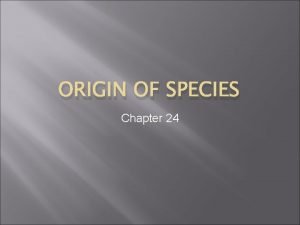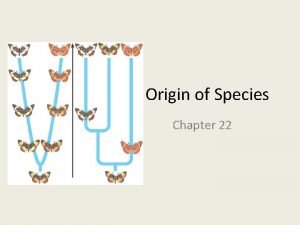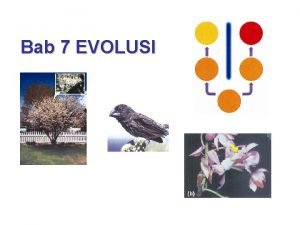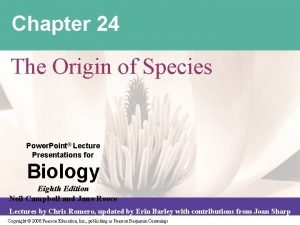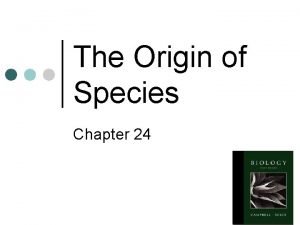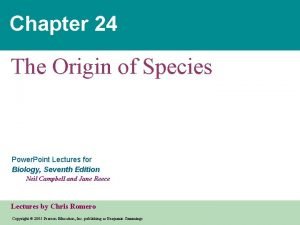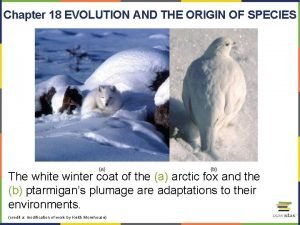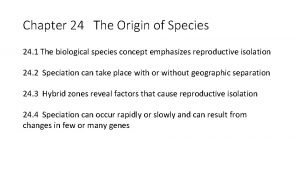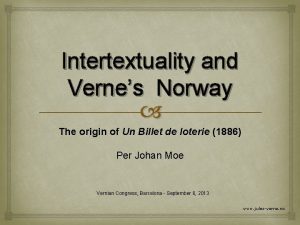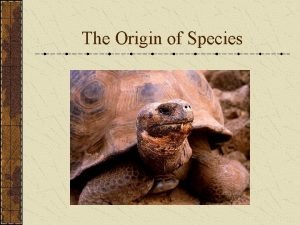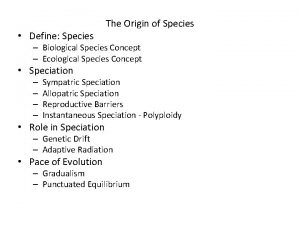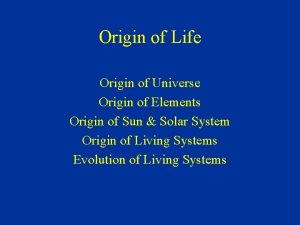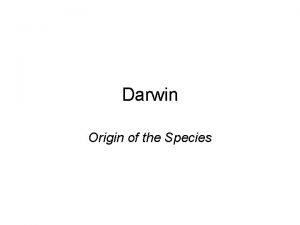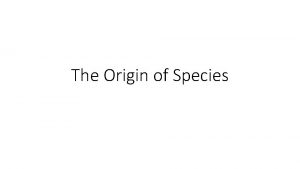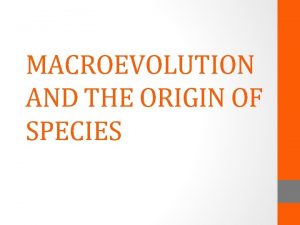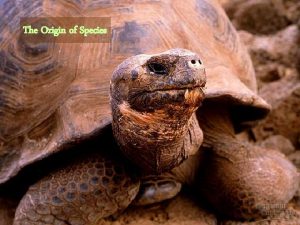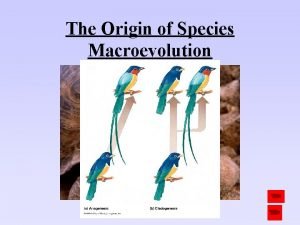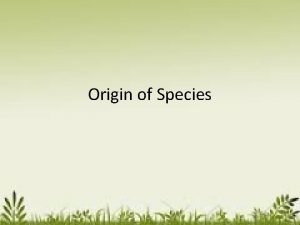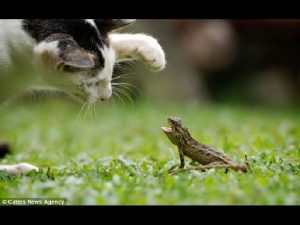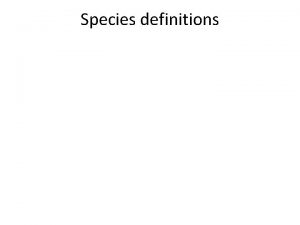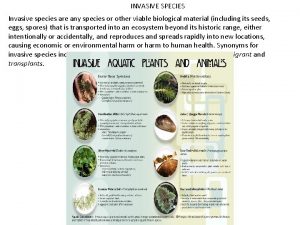The Origin of Species CHAPTER 24 24 1


















- Slides: 18

The Origin of Species CHAPTER 24

24. 1 The biological species concept emphasizes reproductive isolation

Microevolution Focuses on the change in genetic frequencies for a trait in a population over time (HWE)

What is a species? Organisms of the same group that can interbreed and produce fertile offspring

Biological Species Concept A population whose members have the potential to: Interbreed with one another and Produce viable, fertile offspring but Who cannot produce viable, fertile offspring with members of other species

What does this mean? Reproductive isolation is the key once similar organisms are no longer able to interbreed in nature, they are considered to be another species Speciation has occurred

Reproductive Isolation Barriers that prevent two species from producing viable, fertile hybrids

Pre-zygotic Barriers Prevent successful mating No fertilized eggs (zygotes)

Habitat Isolation Species live in different locations may never meet and thus will never mate

Behavioral Isolation If mating behaviors are dissimilar among species, mating may not occur Unique behaviors allow own species recognition Blue footed booby dance

Temporal Isolation Breed or flower at different times

Mechanical Isolation The reproductive organs of two species are incompatible Galearis diantha and Ponerorchis chusua orchids pollinated by different species of bees

Gametic Isolation Gametes of 2 species may not meet due to chemical barriers preventing survival of sperm Important to aquatic species

Post-zygotic Barriers that prevent the hybrid zygote from becoming a viable, fertile adult.

Reduced Hybrid Viability Genetic incompatibility may force miscarriage of hybrid embryo Zygote (blue) forms but soon aborts (clear)

Reduced Hybrid Fertility Robust, viable offspring produced Adult hybrid organism is sterile

Hybrid Breakdown 1 st generation hybrids are fertile but subsequent generations are not Rice strains whose offspring are fertile but those offspring are not; accumulation of mutations over generations cause sterility

Limitations to Biological Species Concept Does not account for asexually reproducing organisms, like bacteria Does not account for interbreeding that may have happened in fossil species
 The origin of species manhwa chap 24
The origin of species manhwa chap 24 Gametic isolation
Gametic isolation The origin of species scan chapter 22
The origin of species scan chapter 22 Bab 7 evolusi
Bab 7 evolusi Chapter 24 the origin of species
Chapter 24 the origin of species The origin of species chapter 24
The origin of species chapter 24 Chapter 24 the origin of species
Chapter 24 the origin of species The origin of species manhwa chapter 18
The origin of species manhwa chapter 18 Why is the saguaro cactus a keystone species
Why is the saguaro cactus a keystone species The origin of species manga 24
The origin of species manga 24 The origin of species bl novel
The origin of species bl novel Origin of species by charles darwin
Origin of species by charles darwin Hát kết hợp bộ gõ cơ thể
Hát kết hợp bộ gõ cơ thể Lp html
Lp html Bổ thể
Bổ thể Tỉ lệ cơ thể trẻ em
Tỉ lệ cơ thể trẻ em Voi kéo gỗ như thế nào
Voi kéo gỗ như thế nào Tư thế worm breton
Tư thế worm breton Chúa yêu trần thế alleluia
Chúa yêu trần thế alleluia

